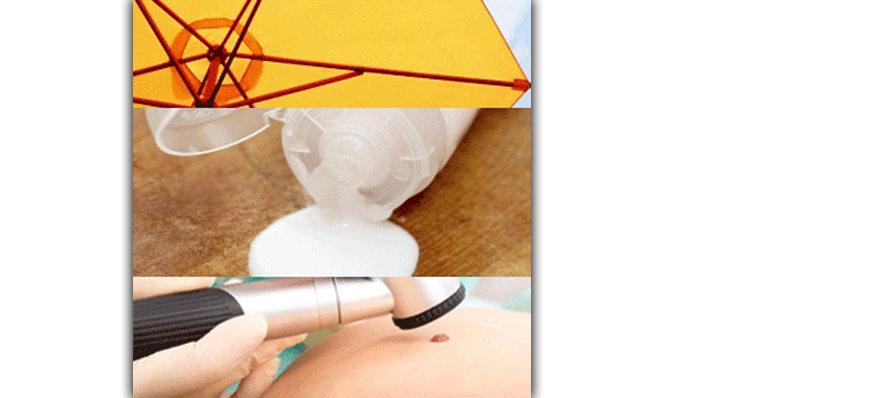SKIN CANCER AWARENESS: Skin cancer has no season May is Skin Cancer Awareness Month. Every month should be. Skin cancer, including the deadly malignant melanoma, is one of the few cancers that continue to be on the rise.Studies have shown that every 10 to 20 years the incidence of melanoma has been doubling in the USA. People with darker skin tend to get it less but it is sometimes deadlier. This is partly because of the myth that dark skin cannot get skin cancer. This can lead to people with darker skin being less careful about preventing skin cancer and abnormal lesions not being identified correctly as they start.
Exposure to harmful UVA and UVB rays is a daily reality. Sun damage is cumulative — even the little sun that you get while crossing the street counts. Car windshields protect against UVB but generally, unless very heavily tinted, will not protect you against UVA. UVA is as carcinogenic as UVB and is known to cause other health problems, too. This pattern of accumulated sun exposure and photodamage over many years is directly correlated with the development of basal and squamous cell carcinoma — less deadly but still skin cancers. Melanoma is different.
This deadly cancer is related to the sun exposure pattern of brief, intense exposure rather than years of tanning. As the Skin Cancer Foundation tweeted: “One or more blistering sunburns in childhood or adolescence more than double a person’s chances of developing melanoma later in life”. Think you’re safe indoors? Think again. Computer screens and indoor lights cause melasma. Far more dire: enough dangerous UVA rays get through windows and windshields to be worrisome. Protect year-round, both indoors + out. Armada is still the only sun AND LIGHT screen in the world specifically made and tested for both outdoor & indoor light. How to stay safe? USE SUNSCREEN DAILY, INDOORS AND OUT. The research is consistent: indoor lights like halogens, fluorescents and computer screens can cause or worsen hyperpigmentations, and UVA penetrates glass. When outdoors, use sunscreens with higher SPFs. CHOOSE HIGHER NUMBERS + APPLY SUNSCREEN PROPERLY.
You need a lot more than you think you do to get the tested SPF values: 1 ounce or 2 tablespoons for your entire body applied 30 minutes before going outside. Choosing higher numbers mitigates some of the risk of a less than perfect application so high values against both UVB and UVA are preferred. Be generous when applying and pay attention to the upper back, head, neck and the left side of the face and body — believe it or not, studies show higher incidence on these areas. No matter what your sunscreen says, reapply every one to two hours and after sweating, swimming or toweling off.
Armada has some of the highest protection factors in the world, and is skin safe & comfortable — making the daily and proper use of sunscreens a delight, not a chore. Published & awarded clinical studies attest to its proven efficacy. GET A MOLE MAPPING. Ask your dermatologist for a mole mapping, a painless procedure using specialized digital and dermoscopic equipment to generate a complete map of the positions and appearances of moles and lesions on the entire body. These can help spot changes before they are visible to the naked eye. This ultimately allows for earlier detection of melanoma and… …early detection can increase the likelihood of a cure by as much as 100%! SCHEDULE AN ANNUAL SKIN CANCER SCREENING. CHOOSE THE RIGHT DOCTOR.
Schedule an annual skin cancer screening with your dermatologist. Look for a dermatologist boarded with at least your country’s official dermatological society and ideally one who is trained in skin cancer detection such as a dermatopathologist (a dermatologist who specializes in diseases of the skin and microscopic analysis). In addition to the mole mapping, this can significantly increase your chances of preventing skin cancer or catching it early and treating it successfully RECOMMENDED RESOURCES: AAD.org • SkinCancer.org





